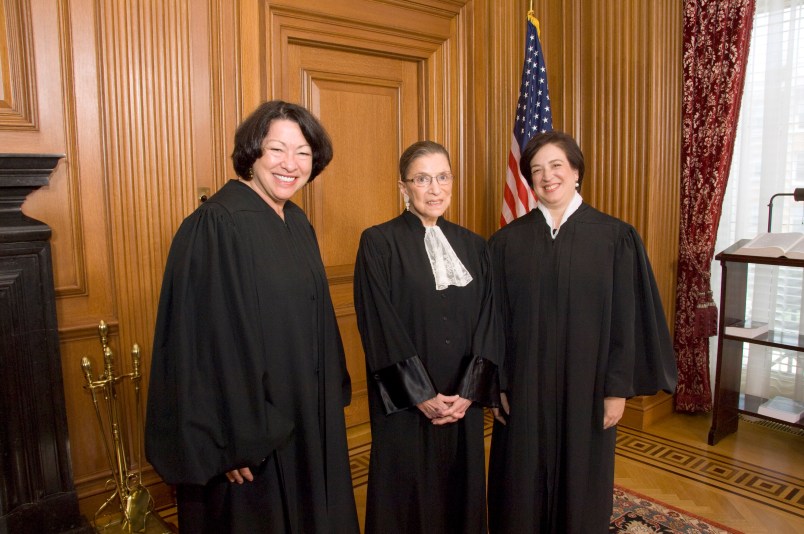In a sharply divided Supreme Court, women led the charge Tuesday in aggressively questioning the challengers of the rule under Obamacare that for-profit employers’ health plans cover contraceptives for female employees at no extra cost, which the suing business owners say violates their religious liberty.
The first salvo came from Justice Sonia Sotomayor, who swiftly jumped in to question the challengers’ lawyer if any employer can get an exemption from a general law that they claim a religious objection to.
“There are many people who have religious objections to vaccinations,” she told Paul Clement, who was representing Hobby Lobby and Conestoga Wood, two businesses who sued for relief from the mandate on the basis of their owners’ Christian beliefs.
Clement responded that each case would have to be looked at individually in terms of whether law satisfies the strict scrutiny requirements under the 1993 Religious Freedom Restoration Act (RFRA).
The most forceful was Justice Elena Kagan, who repeatedly asked aggressive questions throughout the 90-minute argument about the legal dangers of exempting certain entities from laws on the basis of religion.
“There are quite a number of medical treatments that religious groups object to,” she said, positing that a ruling against the Obama administration could empower business owners to seek exemptions from laws about sex discrimination, family leave and the minimum wage. “You’d see religious objectors come out of the woodwork,” Kagan warned, arguing that it’s problematic for judges to test the centrality of a belief to a religion or the sincerity of beliefs that are invoked in court.
Justice Ruth Bader Ginsburg also asked several deeply skeptical questions about the business owners’ argument that the mandate runs afoul of RFRA.
But the outcome was difficult to predict as conservative-leaning justices appeared broadly sympathetic to the arguments put forth by Hobby Lobby and Conestoga Wood.
Chief Justice John Roberts and Justices Antonin Scalia and Samuel Alito all set their targets on the administration, with tough questions, and mostly softballs to the challengers’ lawyer. Justice Clarence Thomas, the most conservative member, did not speak, as is customary for him.
Anthony Kennedy asked more skeptical questions to U.S. Solicitor General Donald Verrilli, who was defending the law for the government, than to Clement. He appeared unconvinced that the birth control mandate satisfied strict scrutiny under RFRA, arguing that the government’s reasoning could let it force businesses to pay for abortions. But he also wondered aloud if the right of employers trumped the right of female employees who were guaranteed contraceptive services under the Affordable Care Act.
Kagan also said a ruling against the mandate would directly harm women.
“Congress has made a judgment and Congress has given a statutory entitlement and that entitlement is to women and includes contraceptive coverage,” she said. “And when the employer says, no, I don’t want to give that, that woman is quite directly, quite tangibly harmed.”
Outside the court, amid snow showers, women’s health activists from Planned Parenthood and elsewhere held signs and chanted in support of the birth control rule.
The cases, which were consolidated, are Hobby Lobby v. Sebelius and Conestoga Wood v. Sebelius.






